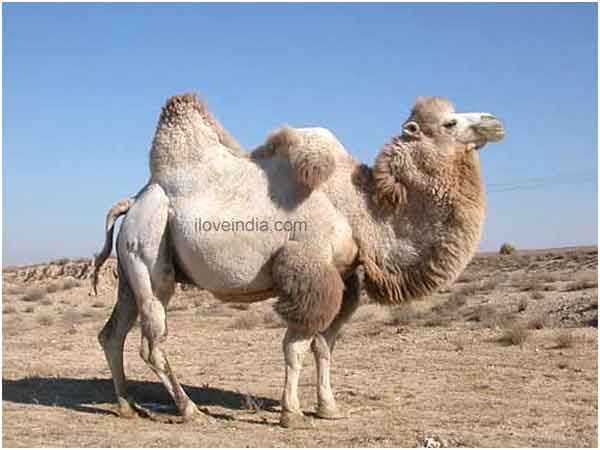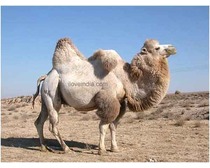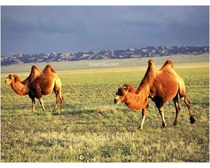Bactrian camel is one of the rare species of camels, having two humps on their back. Read on to know interesting facts and amazing information on Bactrian camels.
Facts About Bactrian Camel
Bactrian camels are the two-humped camels, which are predominantly found in parts of Central Asia, China and Mongolia. It is believed that these camels were domesticated before 2500 BC, in parts of Northern Iran, Northeast Afghanistan and Southwestern Turkestan. Today, they are listed under the endangered species and were among the top-10 “focal species” in 2007, under the Evolutionary Distinct and Globally Endangered (EDGE) Project. Their number has exceedingly been reduced today and attempts are being made to restore them. These camels are highly tolerant to the extremes of temperature and can survive for many days without water. They can carry several loads on their back and walk conveniently through the sands of the desert. We bring you some interesting facts and amazing information on Bactrian camel, through this article.

Facts About Bactrian Camel
Binomial Name: Camelus bactrianus
Kingdom: Animalia
Phylum: Chordata
Class: Mammalia
Order: Artiodactyla
Family: Camelidae
Genus: Camelus
Species: C.bactrianus
Binomial Name: Camelus bactrianus
Length: 11-12 ft including tail.
Weight: 1,000 – 1,500lbs
Life Span: longest recorded, 50 years
Diet: Grasses and Shrubs
Range: China, Mongolia and Central Asia
Habitat: Steppe grasslands and Desert areas
Call: Low grunts
Age of Maturity: 5 years
Gestation Period: About 13 months
Number of Offspring: One
Interesting & Amazing Information On Bactrian Camels
- Bactrian camels, unlike the Arabian camels, have two humps, instead of a single one.
- The humps of Bactrian camels store fats, which they can convert to water and energy when they don’t find food.
- The humps of the camel become floppy and flabby when the fat content in them gets depleted.
- It is believed that Aristotle was the first person to call the two-humped camel “Bactrian”. The name probably comes from a large area in Central Asia.
- The temperature in deserts where these camels inhabit rises to about 38° C in the summer and falls to as low as -29° C in the winter. Bactrian camels adapt to both the extremes of climatic conditions.
- The camels have a thick shaggy coat, which protects them in winter. As the season changes and summer approaches, the coat falls off.
- Bactrian camels rarely sweat, which help them conserve the fluids in their body for longer periods.
- The camels take in water like the sponge. A very thirsty camel can drink up to 135 liters of water in just 13 minutes. At one time, it can drink water up to 30 percent of its body weight.
- Bactrian camels behave similar to the cows, in searching for food in the morning and chewing the cud in the afternoon.
- Once the camels reach maturity, in five years, the young males are driven out of the herd, whereas the females remain with their mothers.
- During mating season, the older males return to the herd. But they are often driven out by their young rival males.
- Bactrian camels have bushy eyebrows and two rows of long eyelashes, which protect their eyes.
- In order to prevent sand from entering their nose, the camels have the ability to close their nostrils.
- Bactrian camels have big, flat footpads, which facilitate their convenient movement through the rocky desert, without sinking.
- Wild Bactrian camel is genetically different from the domestic ones. At the same time, they are the only wild camels existing on earth today.
- It is believed that the ancestors of all camels resembled the wild Bactrian camels. In the embryonic stage, the one-humped camels have another hump, which stops growing further as they grow.
- Bactrian camels can carry hundreds of pounds of cargo, for up to 30 miles in a day.
- The camels can move both their legs on one side of their body, at the same time.
- Bactrian camels are listed amongst the endangered species today, with less than 1,000 camels living today, in the parts of China and Mongolia.
- Wild Bactrian camels are the only land mammals that can drink salt water to satisfy their thirst.
- Though they prefer to walk, these camels are excellent runners. They can run at a speed of 10-20 mph.


See also
More from iloveindia.com
- Home Remedies | Ayurveda | Vastu | Yoga | Feng Shui | Tattoos | Fitness | Garden | Nutrition | Parenting | Bikes | Cars | Baby Care | Indian Weddings | Festivals | Party ideas | Horoscope 2015 | Pets | Finance | Figures of Speech | Hotels in India : Delhi | Hyderabad | Chennai | Mumbai | Kolkata | Bangalore | Ahmedabad | Jaipur
- Contact Us Careers Disclaimer Privacy Policy Advertise With Us Lifestyle Sitemap Copyright iloveindia.com. All Rights Reserved.




